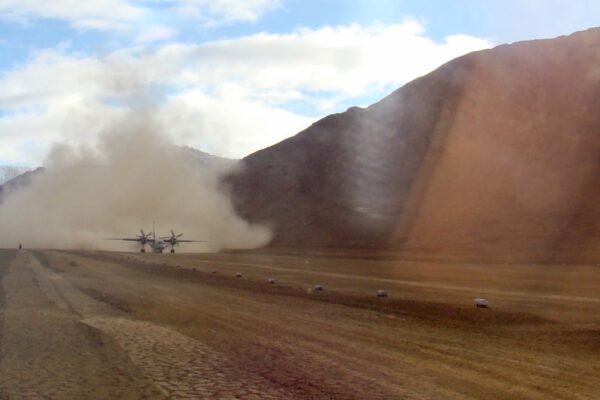As the border tension continues though the Chinese side is indeed making attempts at playing it down as also New Delhi, it remains to be seen how it all pans out.
There are reports of efforts being made at the diplomatic and military fronts to resolve the ongoing crisis coming as it does at a time when the country is already having to battle on several fronts ranging from the migrants issue, cyclone Amphan, locusts and now with the onset of monsoon, how well prepared it is to face the possibility of floods.
While the initial focus was on Pangong, it later emerged that China had objected to a series of construction activities being carried out by India about 200 km away, in the Galwan Valley.
The Valley has largely remained peaceful since the 1962 war and is one area where the Chinese Claim Line and the LAC match, and this has been the understanding for years now at the local level.
However, no maps have been exchanged in this area, which means any kind of understanding is not formal.

According to Indian sources what has indeed appeared to have rubbed the Chinese on the wrong side was the road construction activities, which are important to India from a military point of view, vis-a-vis the key airbase of Daulat Beg Oldi (DBO) in sub-sector north in eastern Ladakh.
India’s Border Roads Organisation built the Shyok-DBO road last year which is at least 10 km inside the LAC at several points, and runs perpendicular to the Galwan river. To connect this road to the LAC, India was constructing feeder roads. This included a bridge over a nullah or rivulet, near the confluence of the Shyok and Galwan rivers.
The Chinese have been objecting to this, and following the Pangong clash, they decided to ramp up their presence.
Taken aback by the Chinese objection to construction within Indian territory, India decided to “dig in” and do mirror deployment.
The Chinese have not crossed the CCL in these areas, but did accept that these areas are about 3 km within India’s perception of the LAC.
Meanwhile there were developments which gave the impression that the two Asian giants were keen on improving relations as they had a military exercise in Meghalaya and the 22nd meeting of the Special Representatives on the boundary dispute.
This was followed by an early January visit to China by the Indian Army’s Northern Command head; but only a couple of days before, the Chinese PLA had also begun a military exercise in Tibet.
These events might be viewed as being planned months in advance, but there were also a series of actions by each side, which are possibly designed to push the envelope, to needle, or to test the other’s limits.
There was the presence of a Chinese research vessel in the Indian EEZ near the Andaman and Nicobar Islands, which had to be told to leave by the Indian Navy. This was reported just a few days before the counter-terrorism exercise, with the Indian Navy chief even highlighting the frequency with which Chinese vessels were found in Indian waters.
In January, soon after the senior Indian army official had left Beijing, China tried—and failed—for a third time to raise the issue of Kashmir at the UN Security Council on behalf of Pakistan.
Meanwhile in mid-February, by which time COVID-19 was beginning to make its presence felt globally and China itself was reeling, Beijing joined other nations at the Financial Action Task Force (FATF) in warning Pakistan about its failure to meet commitments on action against terrorist financing and money laundering, and objected to a visit to Arunachal Pradesh by the Indian Home Minister.
The minister was visiting on the occasion of the 33rd anniversary of the founding of the state.

Amid the growing uneasiness between the two countries, there are proposals for India and China to work together to develop a vaccine for COVID-19. But talk of such cooperation between the two countries has hardly led to anything concrete and specially in the light of increasing border tensions, unless that issue is resolved, any further cooperation would be more in the realm of mere talk.
Another move which could hamper Sino-Indian relations specially in the field of trade which is currently in favour of China is the amendment to India’s foreign direct investment (FDI) rules introduced towards the end of April mandating compulsory government approval for investments from neighbouring countries.
Clearly, it is China that is the target here. However, on other issues such as a resolution of the boundary dispute or the ability to manoeuvre in international organisations, this public attention could well constrain the Indian government’s options.








